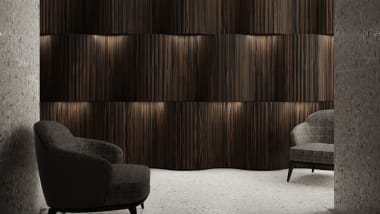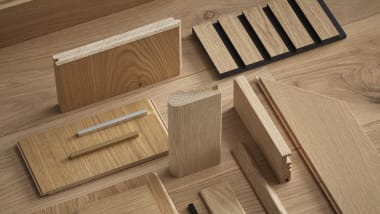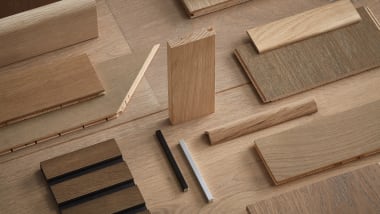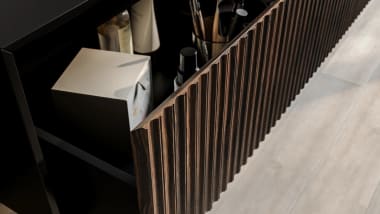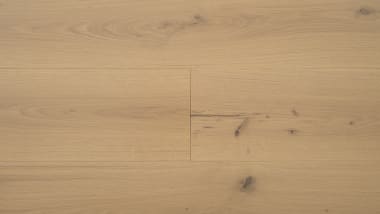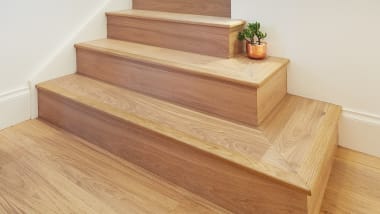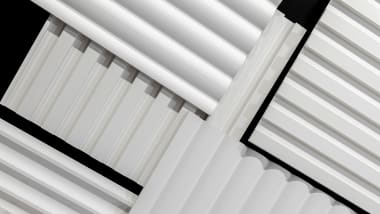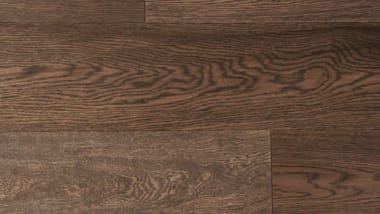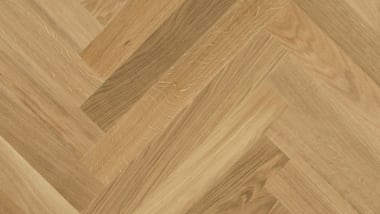What is a Floating Timber Floor?
21 May 2020
You might have heard the term “floating floor” and wonder what exactly it means. In actual fact, a floating timber floor does “float” over your existing floor, due to the simple, easy and secure click-joint profile on many engineered timber floor boards, which has ensured the popularity of floating method installation among homeowners.
Here’s what you need to know about products suitable for floating installation method.
What do we mean by a “floating” timber floor?
The term "floating timber floor" refers to the method of installation of any timber flooring plank that has a click-system profile, which allows them to be suitable for a floating method of installation.
Floating a timber floor means that it will not be nailed, glued or otherwise permanently fixed to a subfloor or surface. The timber boards are instead fitted over the existing floor and appropriate underlay. It is a requirement that the subfloor is clean, dry, flat and required expansion allowance is made around the perimeter. Effectively, the new floor “floats” over your pre-existing floor.
Which timber flooring boards are suitable for a floating installation?
The manufacturing process for floating floors is the same for any engineered timber flooring, with the exception of the edge or "profile" of the planks. There are two main options of profile for timber flooring - tongue and groove profile, or click-system profile. We do not recommend tongue and groove wood flooring planks for a floating installation method due to experience with movement and sound from the joint. Therefore flooring that can be installed using the floating floor method installation, we recommend have a click-system profile.
As a traditional solid timber floor cannot be floated, any timber flooring that is to use a floating installation method will most likely be of an engineered construction which consist of a layer of hardwood overlaid upon a high-density substrate.

Click-system edge profile - suitable for installing as a floating timber floor.
What are the benefits of floating timber floors?
Floating timber floors offer a range of benefits to homeowners:
- Range: There is a diverse range of timber colours and species available that can be installed using a floating floor method, popular choices include Oak, Jarrah, Cedar and Pine wood.
- Versatility: The ease of installation combined with a natural aesthetic means a floating timber floor can be incorporated into a variety of spaces and design concepts.
- Durable: Once clicked together, timber floors installed using the floating method float as a single unit. To accommodate movement it is essential that the floor is not restricted at any point from floating.
- Cost-effective: Aside from carpet, you don’t often need to remove your existing floor prior to installation, which reduces the cost of your project. Floating floors are also easier to remove in future, because they aren’t glued or nailed down.
- Rapid Installation: Floating floors are quick and simple to install by clicking the boards into place. Because floating floors aren’t glued down, there’s no wait time for the floor to settle.
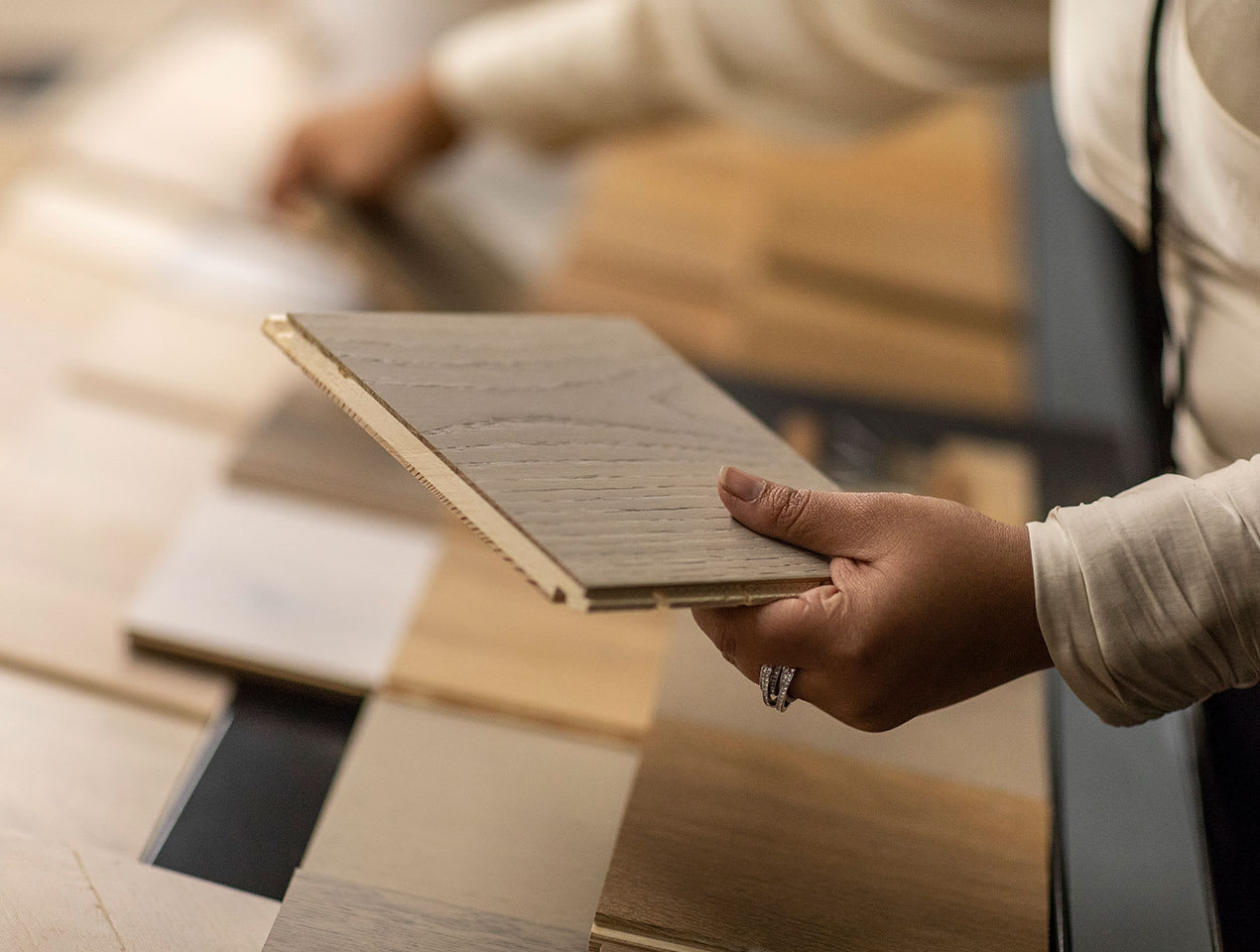
How do you install a floating timber floor?
The installation process for floating timber floors is simple, cost and time-effective, which is why they’re so popular for residential renovation projects in particular.
To install a floating wood floor, you don’t need glue, nails or any other adhesives. Simply lay the boards in place over your existing floor. The subfloor must be clean, solid, dry and flat, which means you should remove any carpeting from the space in which you intend to install the floating floor. Laminate, concrete and tiles may not necessarily need to be removed before installation, depending upon their condition.
Allow an expansion gap around the perimeter for contraction after installation, allowing the entire floor to float as a whole. Your supplier will provide instructions as to what gap is ideal or required for your chosen product.
How does a floating timber floor stay in place?
Floating timber floorboards are manufactured with a click-lock mechanism. When installed, this mechanism provides a secure and tight fit, keeping the floorboards in place. Because an allowance is made for eventual expansion and contraction during installation, the entire floor adjusts as a whole, avoiding gaps or warping in your timber floor.

Click-system edge profile - suitable for installing as a floating timber floor.
Can floating timber floors get wet?
While floating timber floors are adaptable to limited humidity variations in a room, like any timber floor, it’s advised to avoid using floating timber boards in spaces such as bathrooms and laundry rooms.
On the other hand, kitchens and dining rooms are a different story, as major leaks are rare and if cleaned up quickly, spills aren’t likely to cause damage.

Cost-effective, durable and aesthetic value: that’s a floating timber floor
Choosing to install your flooring as a floating timber floor offers so much design potential for residential and commercial spaces. If you’re looking for a cost-effective and time-efficient timber floor, then floating floor boards will be a great choice for you!
Have a question about floating wood floors? Get in touch with our friendly Havwoods team today.
Want to learn more about our range of engineered timber flooring? Browse our product range or visit a Havwoods showroom in Sydney, Newcastle, Brisbane or Melbourne today or request a free sample of any of our floating timber products.



